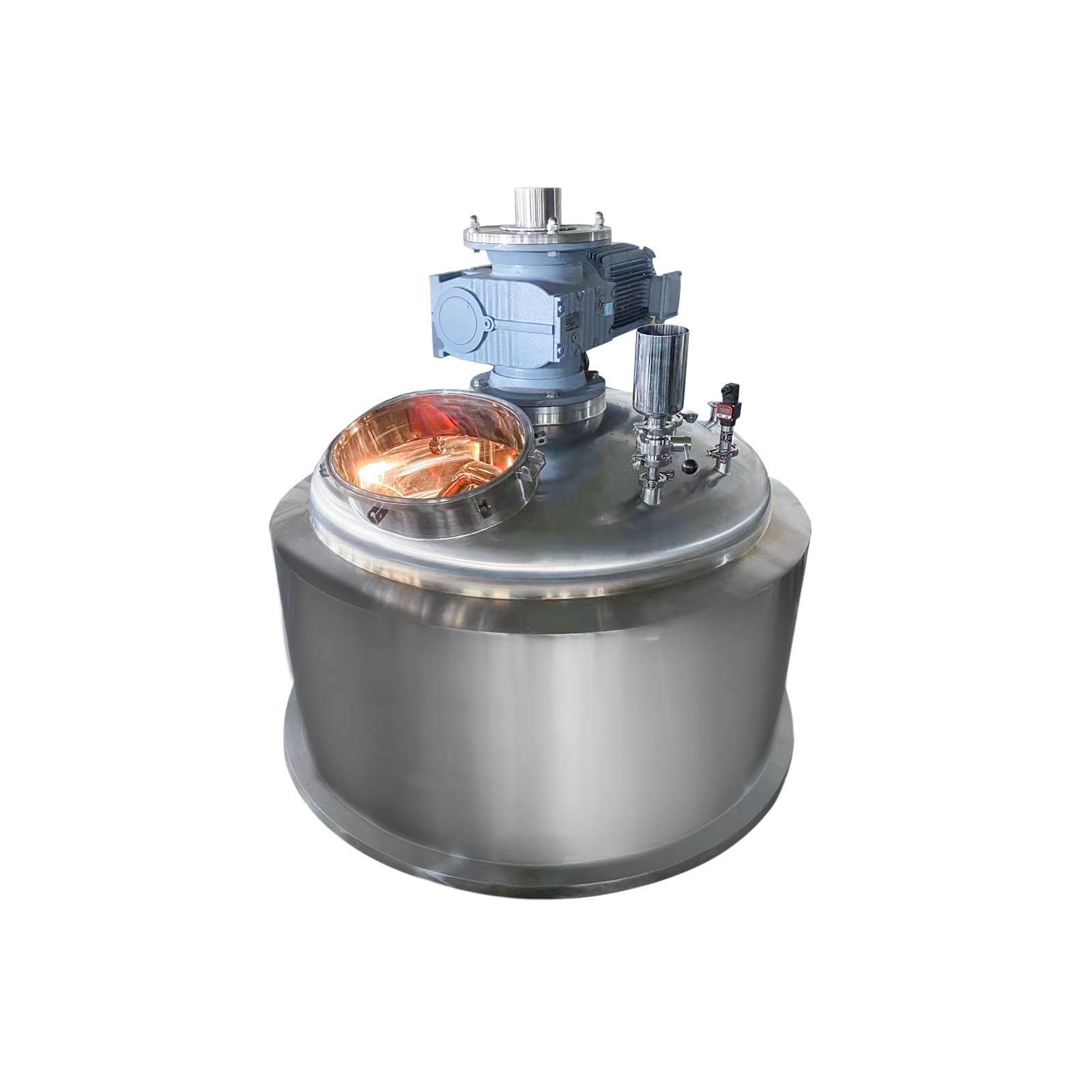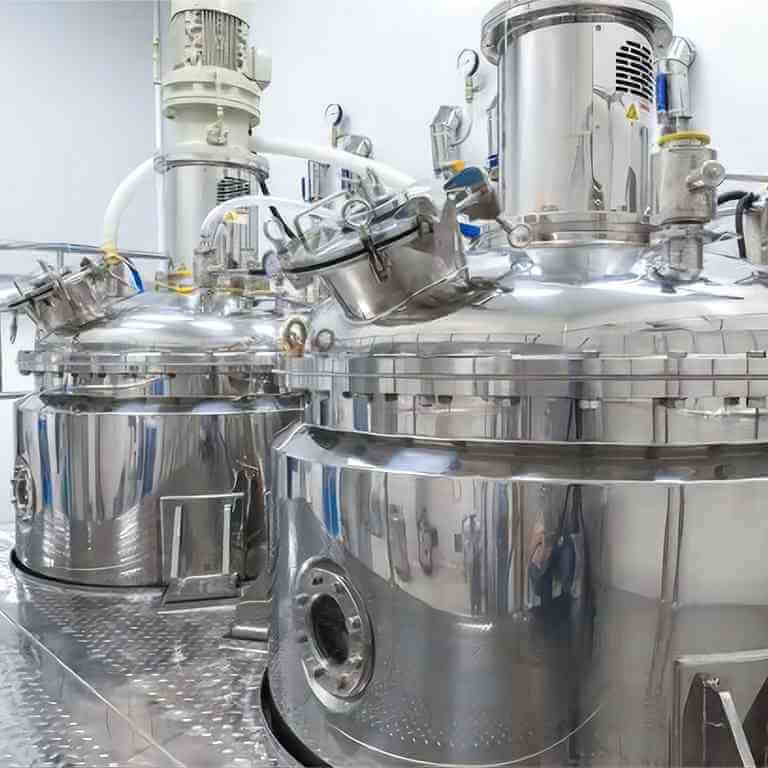

High Pressure Reactor
High-pressure reactor: used in chemical synthesis, catalytic reaction, and other fields
Material
glass, stainless steel (316, 304), carbon steel, others
Capacity (L)
10-10000+
Mixing system
anchor, paddle, frame and others
Heating system
electric heating, oil heating and others
The High-pressure reactor is mainly made of the kettle cover, the kettle body, the strong magnetic coupling stirrer, the high temperature, and high-pressure needle valve, the lower stirring part, the inner cooling coil, the temperature measuring part, the liquid lower pipe, etc.
Request a quoteThe high pressure reactor is divided into open type and closed type in terms of form. The structure of the open type high pressure reactor is relatively simple, mainly composed of a cylinder body and a cylinder bottom (lower head). Generally, the machine is equipped with a movable kettle cover, transmission, And stirring device, this type is movable. Closed high pressure reactors are widely used in the production of resins and paints. These two types of high pressure reactors are manufactured by division of labor in the production plant and then assembled to achieve the purpose of high quality, high efficiency, and cost reduction.

Use heat transfer oil for heating and cooling. A transmission device and a shaft seal device are installed on the kettle cover, which drives the agitator to run and prevents leakage at the shaft seal. The lid of the high pressure reactor is provided with a manhole, sight glass, feeding hole, air outlet, sampling hole thermometer hole, etc.
The nominal diameter of the container refers to the inner diameter of the cylinder, except for the case where the seamless steel pipe with a small diameter is used as the cylinder. Its value is mostly an integer multiple of 100mm, which can be selected according to relevant standards. Most of the cylinders are rolled into cylinders with steel plates, and then welded and assembled. The ratio of the height to the inner diameter of the high pressure reactor barrel is called the aspect ratio, and the recommended value is usually about 1 to 1.3. It is related to factors such as the volume of the high pressure reactor and the variety of products. Different heating methods also put forward different requirements for the aspect ratio of high pressure reactors. If the bottom of the kettle is heated by direct fire, the area of the bottom of the kettle must meet a certain size, otherwise, the aspect ratio will be slightly smaller. If it needs to be heated through the barrel part, the aspect ratio needs to be larger.
The head of the high pressure reactor mainly has two kinds oval head and butterfly head. The dish-shaped head is a spherical head with an arc-folded edge. The depth of the dish head is shallower than that of the oval head, such as the current domestic standard dish head R, = T, r=0.15T, and its surface height h, = 0.226T. Its force is slightly worse than that of the oval head. The oval head is half a spheroid with a straight edge. Since the curvature change of the elliptic curve is continuous, the stress condition is better. The ratio of the major axis to the minor axis of the domestic standard elliptical head is 2, that is, the height of the head surface is equal to 1/4 of the inner diameter of the head. At present, the straight edge height fi2 of the two domestic heads is selected according to the diameter of the head. Head diameter T≤2m, h2 is 25mm; T>2m, h2 is 40mm.

The number of openings in the lid of the high pressure reactor for different purposes is different. The opening configuration of the high pressure reactor cover also changes with the diameter and discharge method of the high pressure reactor cover. If the diameter of the kettle cover is small and the hole position is insufficient, one hole can be used for multiple purposes. For example, a sight glass is set on the manhole cover; a horizontal header is set on the feed hole for parallel connection of several raw material pipelines. If there is enough hole placement, for easy operation, hand holes can be set in addition to the manhole. For high pressure reactors heated by direct fire, for safety reasons, there are no holes in the bottom of the high pressure reactor to take over. Most of the sampling is done by means of vacuum sampling by means of a sampling tube inserted under the liquid surface, and some samples are taken from the lower side wall of the kettle body. Because temperature control is particularly important, two tube holes are generally left, and two different thermometers can be installed.
The barrel and the bottom (lower head) of the high pressure reactor are welded, and all internal welds should be polished to avoid material hanging. The connection between the cylinder and the kettle cover (upper head) is usually done in two ways: flange connection and welding. The flange-type kettle cover is removable, which facilitates the inspection, cleaning, and maintenance of the high pressure reactor, but its manufacturing cost is high, which increases the possibility of leakage. Moreover, if they are not disassembled for a long time, the bolts and nuts will rust, making disassembly difficult. Therefore, it is generally only recommended to be used in small-volume (≤3m3) high pressure reactors.
Welded high pressure reactors without large flanges are now more commonly used. Since there is no large flange, a manhole must be opened on the kettle cover for maintenance. If the agitator cannot be installed and removed through the manhole, it should be made into a detachable structure. The manhole should be a quick-opening structure with a revolving cover, which is easy to open, so as to facilitate the operation of workers and reduce the intensity of physical labor.




